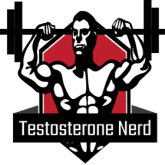Male pattern baldness is a common condition that affects millions of men worldwide.
A receding hairline and thinning of hair on the crown of the head characterize it.
In this article, we will explore the link between testosterone and male pattern baldness, including the role of androgen hormones, the effects of testosterone on hair follicles, genetic and environmental factors, available treatments, prevention methods, impact on mental health, and answers to frequently asked questions.
Key takeaways:
- Male pattern baldness is primarily caused by genetics, not testosterone.
- Testosterone and dihydrotestosterone (DHT) play a role in hair loss, but it’s the sensitivity of hair follicles that determines hair loss.
- Available treatments for male pattern baldness include medications, hair transplant surgery, scalp micropigmentation, laser therapy, and platelet-rich plasma (PRP) therapy.
- Prevention methods include maintaining a healthy diet, reducing stress, using a gentle shampoo, avoiding tight hairstyles, and taking care of the scalp.
- Male pattern baldness can have a significant impact on mental health, leading to anxiety, depression, and low self-esteem. Seeking support from friends, family, or a mental health professional is essential.
Male Pattern Baldness Defined
Male pattern baldness, also known as androgenetic alopecia (AGA), is an inherited pattern of baldness hormone-regulated by the testosterone metabolite dihydrotestosterone characterized by follicular androgen sensitivity and follicular miniaturization.
It is the most common form of hair loss in men, affecting up to 50 million men in the United States alone [1].
Hair loss is due to the shrinkage of hair follicles and the resulting impact on the growth cycle.
New hairs become finer and finer until there’s no hair left at all and the follicles become dormant.
The Role of Androgen Hormones
Androgen hormones, such as testosterone and dihydrotestosterone (DHT), play a crucial role in the development of male pattern baldness.
DHT is a byproduct of testosterone that has been broken down for use by the body.
Men experiencing male pattern baldness usually have a high level of DHT, which has been proven to shrink hair follicles, making it impossible for healthy hair to survive [2].
However, it’s not the amount of testosterone or DHT that causes baldness; it’s the sensitivity of hair follicles.
That sensitivity is determined by genetics.
Testosterone’s Effects on Hair Follicles
Testosterone is a hormone that is produced in the testes and adrenal glands.
It is responsible for the development of male sexual characteristics, such as a deep voice and facial hair.
Testosterone also plays a role in the growth and maintenance of hair follicles.
However, high levels of testosterone can lead to an increase in DHT, which can cause hair follicles to shrink and eventually stop producing hair [3].
Genetic and Environmental Factors
Male pattern baldness is an inherited condition that is passed down through families.
A combination of genetic and environmental factors causes it.
The AR gene makes the receptor on hair follicles that interact with testosterone and DHT.
If your receptors are susceptible, they are more easily triggered by even small amounts of DHT, and hair loss occurs more easily as a result [1].
Other genes may also play a part.
Environmental factors, such as stress, poor nutrition, and certain medications, can also contribute to hair loss.
Available Treatments
In addition to the treatments mentioned earlier, such as medications, hair transplant surgery, and scalp micro pigmentation, there are other options available for treating male pattern baldness.
These include:
- Laser therapy: Low-level laser therapy (LLLT) is a non-invasive treatment that involves using a device that emits low-level laser light to stimulate hair growth. It is effective in some men with male pattern baldness [6].
- Platelet-rich plasma (PRP) therapy: PRP therapy involves injecting a concentrated solution of platelets into the scalp to promote hair growth. While the evidence for its effectiveness is mixed, some men have reported positive results [7].
Prevention Methods
In addition to maintaining a healthy diet, reducing stress, and avoiding certain medications, there are other prevention methods that men can try to reduce their risk of developing male pattern baldness.
These include:
- Using a gentle shampoo: Harsh shampoos can damage hair and make it more prone to breakage. Using a gentle shampoo can help to keep hair healthy and strong.
- Avoiding tight hairstyles: Pulling hair back tightly into a ponytail or bun can cause damage to hair follicles and lead to hair loss over time.
- Taking care of your scalp: Massaging the scalp regularly can help to improve blood flow and promote hair growth. It is also vital to protect the scalp from the sun to prevent damage to hair follicles.
Impact on Mental Health
Male pattern baldness can have a significant impact on a man’s mental health, leading to feelings of anxiety, depression, and low self-esteem.
It is important for men to seek support from friends, family, or a mental health professional if they are struggling with the emotional impact of hair loss.
There are also support groups and online communities where men can connect with others who are experiencing similar challenges.
Conclusion
In conclusion, male pattern baldness is a common condition that is caused by a combination of genetic and environmental factors.
Androgen hormones, such as testosterone and DHT, play a crucial role in the development of male pattern baldness.
While there are several treatments available for male pattern baldness, prevention methods such as maintaining a healthy diet and reducing stress can also be effective.
It is important for men to seek support if they are struggling with the emotional impact of hair loss.
FAQs
What is male pattern baldness?
Male pattern baldness, also known as androgenetic alopecia (AGA), is a common form of hair loss in men.
A receding hairline and thinning of hair on the crown of the head characterize it.
Hair follicles shrink over time, leading to finer hair and eventually no hair growth.
What role do androgen hormones play in male pattern baldness?
Androgen hormones, such as testosterone and dihydrotestosterone (DHT), contribute to the development of male pattern baldness.
DHT, a byproduct of testosterone, can shrink hair follicles.
However, it is not the amount of testosterone or DHT that causes baldness but rather the sensitivity of hair follicles, which is determined by genetics.
How does testosterone affect hair follicles?
Testosterone, a hormone produced in the testes and adrenal glands, plays a role in the growth and maintenance of hair follicles.
However, high levels of testosterone can lead to increased DHT production, which in turn can cause hair follicles to shrink and stop producing hair.
What are the genetic and environmental factors contributing to male pattern baldness?
Male pattern baldness is primarily an inherited condition influenced by genetic factors.
The AR gene, which affects hair follicle receptors’ sensitivity to testosterone and DHT, plays a significant role.
Environmental factors such as stress, poor nutrition, certain medications, and other genes may also contribute to hair loss.
What are the available treatments for male pattern baldness?
There are various treatment options for male pattern baldness, including:
- Medications: Prescription drugs like finasteride and minoxidil can help slow down hair loss and promote hair regrowth.
- Hair transplant surgery: This procedure involves transplanting hair follicles from the back or sides of the head to the balding areas.
- Scalp micropigmentation: It is a non-surgical procedure where tiny pigments are tattooed onto the scalp to give the appearance of hair stubble or a closely shaved head.
- Laser therapy: Low-level laser therapy (LLLT) stimulates hair growth using low-level laser light emitted by a specialized device.
- Platelet-rich plasma (PRP) therapy: PRP therapy involves injecting a concentrated solution of platelets into the scalp to promote hair growth.
How can male pattern baldness be prevented?
Preventive measures for male pattern baldness include:
- Using a gentle shampoo: Harsh shampoos can damage hair, so opting for a gentle shampoo helps maintain hair health.
- Avoiding tight hairstyles: Pulling hair tightly into styles like ponytails or buns can lead to hair follicle damage and eventual hair loss.
- Taking care of the scalp: Regular scalp massages can improve blood circulation and promote hair growth. Protecting the scalp from sun damage is also important to prevent harm to hair follicles.
What is the impact of male pattern baldness on mental health?
Male pattern baldness can have a significant impact on mental health, potentially leading to feelings of anxiety, depression, and low self-esteem.
Seeking support from friends, family, or mental health professionals can be helpful for coping with the emotional challenges associated with hair loss.
Online communities and support groups are also available for individuals to connect with others facing similar experiences.
Resources:
- https://www.ncbi.nlm.nih.gov/pmc/articles/PMC8003215/
- https://skinkraft.com/blogs/articles/testosterone-hair-loss
- https://bmccancer.biomedcentral.com/articles/10.1186/s12885-018-5197-5
- https://www.healthline.com/health/hair-loss-and-testosterone
- https://tctmed.com/genetics-of-male-pattern-baldness/
- https://tctmed.com/baldness-and-testosterone-2/
- https://www.ncbi.nlm.nih.gov/pmc/articles/PMC3944668/
- https://www.healthline.com/health/prp-for-hair-loss#effectiveness
However, studies ha
I've been fascinated by natural male hormone optimization since 2016. And ever since I've been going through boatloads of different meta-analyses and scientific data associated with increasing testosterone levels naturally. I hold a PhD degree in public health and have 10+ scientific publications on Google Scholar. Thus, in my collective work here you'll find helpful tricks, natural remedies, detailed product reviews (including stuff I've personally tried)... and more!





